The liver is one of the most hardworking but undervalued organs in the body. While much attention is given to heart health, weight loss, and glowing skin, it is the liver that performs approximately hundreds of essential functions. These include storing nutrients like sugar, minerals, and vitamins to fuel the body; controlling the production and excretion of cholesterol; producing bile, which is stored in the gallbladder and helps break down fats1; and filtering out harmful substances, such as alcohol, medicines, and environmental factors2.
Just like the heart, the liver can also be stressed; however, unlike heart problems that may show early signs, the symptoms of a distressed liver show up very late. The liver is stressed when it is overworked and becomes sluggish.
So, how do you understand if the liver is in distress? Here are 17 symptoms that may indicate your liver is under stress:
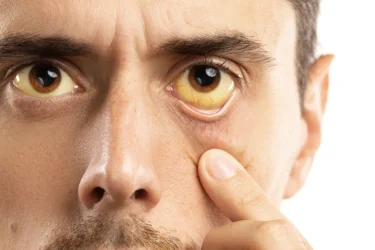
Skin discolouration may sometimes be linked to liver problems. If your skin colour changes to jaundice yellow or pale with a blue tinge, your nails or fingertips turn yellow, or you have yellowing of the eyes, it is advisable to visit a doctor. This change in colour occurs because the body is unable to flush out the toxins, which leads to bilirubin accumulating under the skin, causing skin discolouration3.

Feel bloated frequently and have constipation too? Frequent indigestion may be associated with liver issues. With bloating, you may experience stomach pain as well4. This happens because the bile is unable to break down the food during digestion.
Another important sign is Spider naevi. Spider naevi or angiomas are small clusters of blood vessels that form just beneath the skin, often spreading outward like a spider’s legs. Angiomas typically appear red or purple in colour. These are often present in excessive numbers in people with liver disease.
Dr. M.G. Kartheeka, MBBS, MD (Pediatrics)

The liver plays an essential role in filtering blood and supports the synthesis of many nutrients needed for good health. However, when the liver is stressed, it may affect the synthesis and delivery of nutrients to muscles, tissues and tendons. This may lead to symptoms such as muscle cramps, weakness, and fatigue5.

Do you feel tired all the time? Persistent fatigue may occur when the liver isn’t functioning efficiently. When the body is under continuous strain, it may place additional pressure on the liver and other organs, leading to persistent tiredness. It is best to get your liver checked at this point5.

Is your urine darker than usual? It is possible that this may be due to inadequate water intake, which may cause your stools to be darker too. If you start drinking enough water and the colour of your urine and stool lightens, all may be well. However, if your urine and stool colour are still dark, you should seek medical help as this may be caused by liver problems5.
The culture of fast foods these days is slowly damaging the liver due to non-alcoholic fatty liver disease. Avoiding refined sugar and fast foods and eating before dusk helps a lot in prevention of fat accumulation in the liver, which can allay liver stress symptoms (by promoting weight loss).
Dr. Nikhil Yadav, MBBS MD, CCEBDM

When the liver is stressed, some individuals may experience mood changes or emotional disturbances, such as irritability, anxiety, mood swings, and depression, and some may even experience cognitive impairment, meaning their memory, attention span, and decision-making may be affected6.

Another potential liver distress symptom is little-to-no interest in food. A reduced desire to eat is often caused by an underlying health issue and should be taken seriously5.

Although irregular sleep pattern is a common occurrence amongst millennials due to a stressed lifestyle, a study7 found that liver cirrhosis was responsible for unusual sleep patterns in many patients.

When you have liver problems, the liver may not be able to purify your blood adequately. When toxins are not removed from the blood, it may lead to symptoms like memory loss, difficulty thinking, and confusion5.

Abnormal skin itchiness may be a symptom of liver cirrhosis3.

Liver disease tends to develop over time, slowly replacing healthy liver tissue with scarred or damaged tissue. This affects liver function and changes the metabolism, hormonal balance, and many other factors, which may lead to weight gain8.

Experts believe that when you develop nonalcoholic fatty liver disease (liver disease not associated with alcohol), your palms start to turn reddish, an outward indicator of liver dysfunction3.

Another probable symptom of nonalcoholic fatty liver disease is the enlargement of breasts in men. Although the exact cause of this is unclear, it is speculated that this may occur due to excess production of the female hormone, oestrogen, in this condition9.

Liver damage also manifests in the form of easy and sudden skin bruises and even bleeding5.
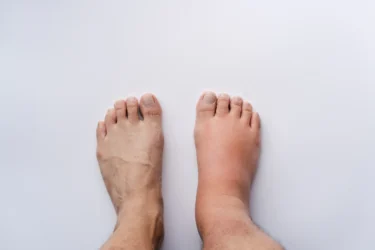
Swelling in the ankles and feet may also be associated with liver dysfunction. There may also be abdominal swelling due to the accumulation of fluid in the abdomen5.
Liver function tests are commonly recommended blood tests for measuring different enzymes, proteins and other substances made by the liver. Changes noticed in liver function tests should be reviewed by a physician to find the cause and manage the condition.
Dr. Ashish Bajaj, M.B.B.S., M.D., in Clinical Pharmacology and Toxicology
Also Read: Liver Fibrosis: What Is It, Causes, Symptoms & Treatment

Experiencing chills is often a natural response of the body when the mercury drops or when you are developing a fever. However, if none of this fits the bill, it could indicate cholestasis (blocked or reduced bile flow) associated with liver disease10.

When the liver is under stress, it can disrupt many bodily functions and may be associated with symptoms such as ringing in the ears, sleep disturbances, dizziness, blurry vision, allergic reactions, gastrointestinal bleeding, reduced sex drive, unexplained weight changes, sensitivity to chemicals, and the appearance of spider veins11,5.
Also Read: Natural Home Remedies for Fatty Liver
A healthy liver is important for overall well-being, as it supports many essential functions like the storage of nutrients, digestion, and filtering blood. If you are experiencing any of these symptoms mentioned in this article, it is advisable to consult your doctor or a liver specialist today to identify the cause of your symptoms and support the timely management of liver issues.
Also Read: What is Hepatitis A? Causes, Symptoms, and How It Spreads
Disclaimer: The information provided here is for educational/awareness purposes only and is not intended to be a substitute for medical treatment by a healthcare professional and should not be relied upon to diagnose or treat any medical condition. The reader should consult a registered medical practitioner to determine the appropriateness of the information and before consuming any medication. PharmEasy does not provide any guarantee or warranty (express or implied) regarding the accuracy, adequacy, completeness, legality, reliability or usefulness of the information; and disclaims any liability arising thereof.
No other food element has received as much negative press as ghee. However, research1 conducted over the years has revealed that, rather than harming the body, ghee is actually beneficial.
It turns out our grandmothers were right to cook ghee with steaming bowls of dal and rice. In ancient scriptures, ghee is even equated with gold. Given its impressive benefits, our ancestors truly understood the value of ghee!
Research suggests11 that ghee is low in harmful fats. It contains healthy fats that help increase good cholesterol (HDL) in the body. Unlike other fats, ghee does not contribute to heart disease1.
Ghee is closely linked to a healthy gut. Traditionally, a spoonful of ghee was consumed before meals to line the digestive tract and reduce the risk of ulcers and even cancer1.
Ghee is rich in butyric acid, which helps the body in producing T-cells that fight diseases1.
Ghee is a reliable source of fat-soluble vitamins A and E, which support liver function, hormonal balance, and fertility2.
Butyric acid in ghee is known for its anti-cancer properties. Its antioxidants also give it anti-inflammatory benefits3.
Ghee is lactose-free. It doesn’t cause allergies in those who have dairy or casein intolerance4.
Ghee is one of the safest dermatological cosmetics. It is skin friendly and helps treat burns1.
Rich in antioxidants, fatty acids and a natural emollient, ghee helps maintain healthy skin by locking in moisture, improving skin repair, treating cracks and softening the skin. This is also one of the popular traditional benefits of ghee1,5.
Ghee is rich in vitamin K, which helps in calcium absorption. It helps in the prevention of tooth decay and atherosclerosis6.
Since the usage of ghee results in balancing the hormones, it is instrumental in managing thyroid disorders7.
Ghee boosts metabolism, making it an ideal medium for weight loss1. It helps the body burn other stored fats more effectively.
Ghee remains stable and does not break into free radicals at a high temperature. Free radicals may contribute to cancer, amongst other diseases. This makes it an ideal medium and a stable fat to cook and fry food in1.
Ghee supports hormonal balance in the body, which can help alleviate menstrual issues such as PMS and irregular periods8.
Ghee significantly enhances the taste of any dish that it is added to, for example, a bowl of dal becomes tastier with a spoonful of ghee.
Ghee is considered a sattvic (pure) food in Ayurveda5. It attracts toxins and helps cleanse the body, contributing to reduced stress and anxiety when consumed1.
Ghee may enhance your memory. According to a study1, desi ghee is a good source of vitamins A, D, E, and K and essential fatty acids (omega 3 and omega 9) which may help with memory.
Dr. Rajeev Singh, BAMS
Delicious and healthy ghee can be prepared using full fat or heavy cream. You can either buy it from the store or collect the thick cream that settles on top of the milk.
Ghee, once misunderstood, is now recognised for its potential wellness benefits when used in moderation. Rich in essential fats and vitamins, it can be a nourishing addition to a balanced diet. Traditional practices and modern insights alike support its role in promoting overall health and well-being.
Ghee is an excellent source of fatty acids, (such as linolenic and arachidonic acid) as well as fat-soluble vitamins (A, D, E, and K) that may help maintain optimal health. I read an article that suggests the regular intake of ghee may help in maintaining good vision as a result of its rich antioxidant content10.
Dr. Siddharth Gupta, B.A.M.S, M.D (Ayu)
Ghee, once misunderstood, is now recognised for its potential wellness benefits when used in moderation. Rich in essential fats and vitamins, it can be a nourishing addition to a balanced diet. Traditional practices and modern insights alike support its role in promoting overall health and well-being.
Also Read: Mustard Oil: Health Benefits, Nutrition, Uses & Side Effects
Disclaimer: The information provided here is for educational/awareness purposes only and is not intended to be a substitute for medical treatment by a healthcare professional and should not be relied upon to diagnose or treat any medical condition. The reader should consult a registered medical practitioner to determine the appropriateness of the information and before consuming any medication. PharmEasy does not provide any guarantee or warranty (express or implied) regarding the accuracy, adequacy, completeness, legality, reliability or usefulness of the information; and disclaims any liability arising thereof.
Castor oil has been used since ancient times as a traditional medicine for a range of health problems. Today, castor oil is used in dietary supplementation, industrial applications, and the production of medicines. Made from the castor bean, also called Ricinus communis, castor oil is commonly used as a home remedy. It is important to know that the outer covering of castor beans contains Ricin – a substance with poisonous qualities, hence the beans should never be eaten raw or whole1. Castor oil can be used for its multiple benefits.
But what are the true castor oil benefits and limitations? How much castor oil do you need? And can it really help with your medical issues? All these questions and more are answered below.
Castor oil is used in industrial processes for the production of lubricants, hydraulic fluid, soaps, paints, dyes, wax, nylon, and more. Today, however, we’ll focus on the medicinal uses of castor oil. It is used:
Let’s take a look at whether castor oil benefits you and what is considered a safe dosage for castor oil.
From what I have observed, castor bean seeds come in various types and they contain a significant amount of oil, ranging from 45% to 55%. This oil is extracted from the seeds of the plant and is known as castor oil. Castor oil has various uses, including in medicine, cosmetics, and industrial applications9.
Dr. Siddharth Gupta, B.A.M.S, M.D (Ayu)

Castor oil is said to have a nourishing effect on hair. It may also benefit itchy, dry scalp since it helps to lock in moisture and may help protect the scalp and hair from microbial and fungal infections. The ricinoleic acid it contains, along with vitamin E and fatty acids, means that it can aid in keeping your scalp clean, healthy, and moisturised4.
Castor oil also has anti-microbial and anti-inflammatory properties. Therefore, it may be able to improve the overall health of your scalp and hair5. Healthier hair may result in better hair volume, but this may not be clearly visible in the short term. In general, castor oil application to the hair and scalp should be seen as part of healthy hair maintenance rather than a magical growth serum. Castor oil is sometimes linked to hair growth, but evidence does not support a direct effect.
Apart from providing sheen and moisture, castor oil is also thought to have anti-inflammatory properties. It may help to curb scalp itchiness in some people. Its anti-inflammatory properties may also be the reason castor oil is used traditionally for skin issues.

Since castor oil contains primarily fatty acids (it is 90% ricinoleic acid), it acts as a humectant (a substance that helps lock in moisture and avoid water loss on the skin)5. This makes castor oil a good moisturiser, although people with allergies or hypersensitive skin may experience a reaction.
Additionally, a recent clinical study suggested that the topical use of castor oil cream may help manage under-eye dark circles, melanin levels, wrinkles, and skin laxity, showing potential as a safe and effective natural management option6. However, larger randomised trials are needed to confirm these benefits. Castor oil benefits for skin may also extend to an improved healing process for wounds and cuts since it has antimicrobial properties and also improves local blood flow7.
Castor oil (in small amounts) is generally considered safe, however, you should use it with caution, especially if you have sensitive skin.

Castor oil is known for its laxative properties and uses in constipation but its long-term use is not recommended8. Always speak with your doctor before taking castor oil for constipation. Since this involves ingesting it, we should quickly take a look at some potential castor oil side effects. When taken in large amounts or if consumed too often, it can result in:
Of all castor oil benefits, its laxative uses are commonly recognised, but overdosing or allergic reaction can be a real risk.
Based on my understanding, ricinoleic acid, the major fatty acid in castor oil, can have various effects on the gastrointestinal tract. It may inhibit the absorption of water and electrolytes, stimulate the secretion of water into the intestines, and reduce the contractile activity of the small bowel. These mechanisms may be beneficial in patients with gastrointestinal conditions9.
Dr. Rajeev Singh, BAMS
Castor oil is not regulated as a medicine; therefore, there are no standardised medical guidelines on dosage. It is best to check with your doctor on the right dose for you, since even the manufacturer’s recommendations may be too much for some people. Particular caution is needed when considering its use in children, the dosage will be different based on their age.
While the science behind castor oil is still being studied, castor oil has been shown to have some positive effects. Castor oil benefits for hair and skin issues could potentially work for many people. It may be tried cautiously, with a patch test recommended first. If you have existing medical conditions, you may want to avoid using anything new without first speaking to your primary doctor.
Disclaimer: The information provided here is for educational/awareness purposes only and is not intended to be a substitute for medical treatment by a healthcare professional and should not be relied upon to diagnose or treat any medical condition. The reader should consult a registered medical practitioner to determine the appropriateness of the information and before consuming any medication. PharmEasy does not provide any guarantee or warranty (express or implied) regarding the accuracy, adequacy, completeness, legality, reliability or usefulness of the information; and disclaims any liability arising thereof.
Links and product recommendations in the information provided here are advertisements of third-party products available on the website. PharmEasy does not make any representation on the accuracy or suitability of such products/services. Advertisements do not influence the editorial decisions or content. The information in this blog is subject to change without notice. The authors and administrators reserve the right to modify, add, or remove content without notification. It is your responsibility to review this disclaimer regularly for any changes.
Leafy greens contain a healthy mix of vitamins, minerals, protein, antioxidants, and other nutrients. Regular consumption of greens such as spinach, kale, and coriander may help support heart health, regulate blood sugar levels, strengthen the immune system, and promote cell growth and repair. Including a variety of leafy greens in your daily diet is a simple yet effective way to enhance overall well-being1.
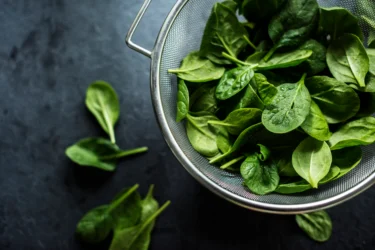
Spinach (palak) is rich in iron and fiber, low in fat and cholesterol. Studies1 have shown that spinach may help with digestion, improve eye health, boost energy levels, strengthen bones, and even lower blood sugar and pressure. As a part of every world cuisine, it is the most common green leafy vegetable found in India.
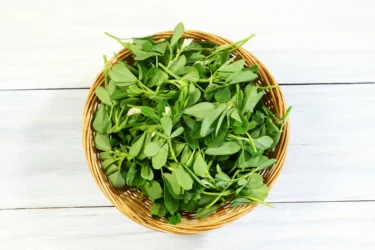
Fenugreek (methi) leaves are known to improve blood sugar control, insulin levels, and metabolism2. In Indian food, it is used extensively in rotis and curries.
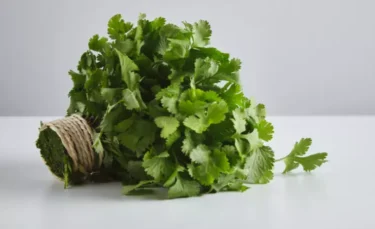
Parsley is packed with vitamins A and C. It offers several health benefits, such as reducing inflammation and pain, helping with digestion, controlling blood sugar, and boosting the immune system. Studies3 also show that it may be beneficial in reducing anxiety and depression.

Besides freshening our palate, mint (pudina) helps with weight loss, depression, nausea, asthma, and skin problems. It also has several other benefits, like improving brain function, reducing pain during breastfeeding, and helping reduce symptoms of common cold1.
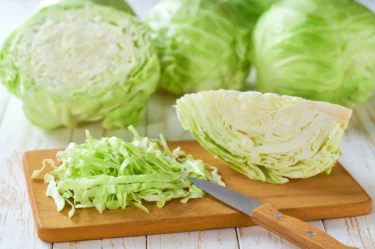
Cabbage is richer in vitamin C than oranges. Cabbage can help with skin problems due to its healing and anti-inflammatory properties. Nutrients present in cabbage may also help reduce cholesterol, improve digestion, and lower blood pressure4. Therefore, cabbage is often considered a great leafy green vegetable that helps to maintain a healthy heart.
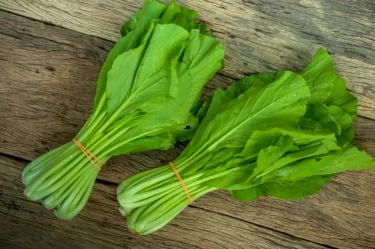
Regular consumption of these ensures blood and liver detoxification, lowering cholesterol, and improving skin and eye health1.
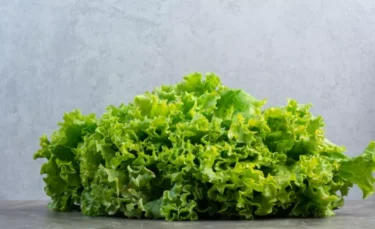
Lettuce is rich in essential vitamins, nutrients, and minerals that lower blood sugar, protect neural health, and fight cancer cells5.

Curry leaves (kadhipatta) can be beneficial for stomach ailments, diabetes, and to balance cholesterol. Studies6 have shown that curry leaf extract may help kill breast tumor cells by reducing cell growth and harmful effects in the body.
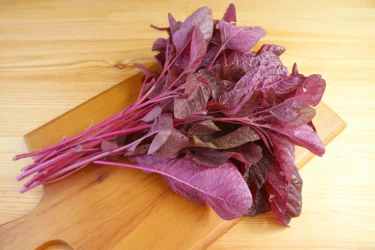
It improves cardiovascular health, strengthens bones, and stops hair loss1.

Bok choy is known as Chinese cabbage or pak choi, bok choy is a nutrient-rich cruciferous vegetable. It’s an excellent source of vitamins and minerals, including vitamin C, vitamin K, and folate. One of its key components is selenium, a trace mineral that supports the immune system and helps protect the body from oxidative stress and infection. With its mild flavor and crisp texture, bok choy is a versatile and healthy addition to a balanced diet4.
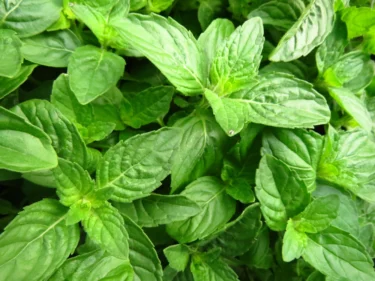
In Indian traditional medicine, basil (tulsi) leaf extracts have been used to manage conditions like bronchitis, rheumatism, and fever. Other known therapeutic uses include managing nerve pain, headaches, reducing blood pressure, and regulating blood sugar levels7. There are different types of basil leaves, like sweet, Greek, Thai, holy, cinnamon, and lettuce basil, each with its unique set of health benefits.

Green onions are rich in essential minerals like potassium, calcium, magnesium, and phosphorus, which support nerve function, muscle contraction, bone health, and blood pressure regulation8.
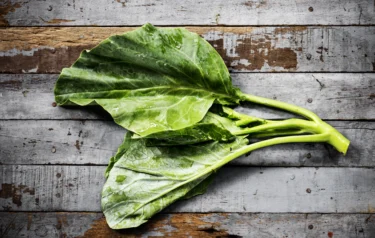
Collard greens contain properties that may offer various health benefits. These include supporting the body’s natural detoxification processes, helping to lower blood pressure, and potentially reducing the risk of certain conditions such as cancer, arthritis, and muscular dystrophy5.
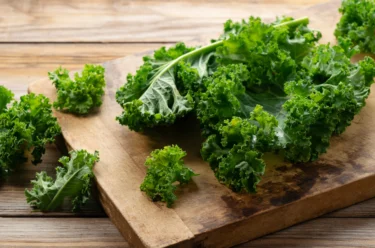
Kale is a healthy addition to smoothies and salads. It may help prevent cancer metastasis, support detoxification, enhance heart function, and contribute to healthy brain development4.

Beet leaves are known for their analgesic properties. It may help improve digestion, clears acne, increases appetite, and promote oral health. It also has various other antiseptic and antioxidant benefits5.
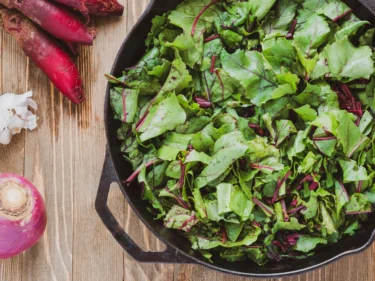
Beet greens promote healthy bones, teeth, skin, and blood vessels. They improve vision, power up the immune system, and maintain cellular health4.
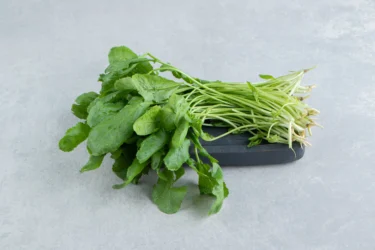
Watercress is a nutrient rich leafy green that is linked to a lower risk of heart disease, metabolic disorders, muscle and bone problems, and some cancers4.
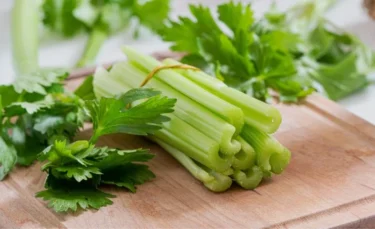
Celery may improve cardiovascular health, reduces blood pressure, decreases cholesterol, regulates blood sugar, and boosts digestion and weight loss9.
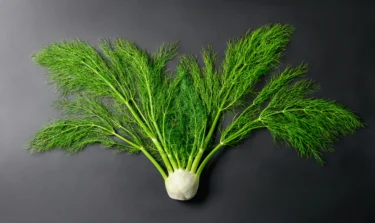
Apart from enhancing the flavor of the food, fennel offers many health benefits. Studies10 have shown that it helps reduce hot flashes, vaginal itching and dryness, and sleep.
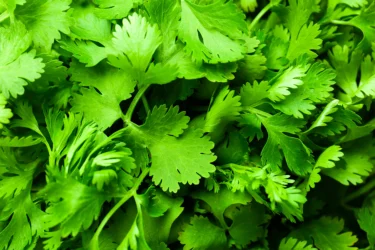
Coriander (cilantro) has more benefits than just enhancing the taste of food. It improves digestion, reduces cholesterol, keeps the urinary tract healthy, promotes better sleep, relieves anxiety, and lowers blood sugar levels11.
Also Read: Moringa Leaves – Health Benefits That You Should Know
While most people may not love leafy green vegetables such as those on this list, they are in fact extremely nutritious. Most of these leafy green vegetables are cultivated year-round, which means that they would be available at your nearest grocery market. This makes it easy to include them in your regular diet. With their many health benefits, these 20 leafy greens can be a smart and healthy addition to your everyday meals.
Also Read: 8 Unknown Benefits of Mango Leaves
Disclaimer: The information provided here is for educational/awareness purposes only and is not intended to be a substitute for medical treatment by a healthcare professional and should not be relied upon to diagnose or treat any medical condition. The reader should consult a registered medical practitioner to determine the appropriateness of the information and before consuming any medication. PharmEasy does not provide any guarantee or warranty (express or implied) regarding the accuracy, adequacy, completeness, legality, reliability or usefulness of the information; and disclaims any liability arising thereof.
« Previous Page